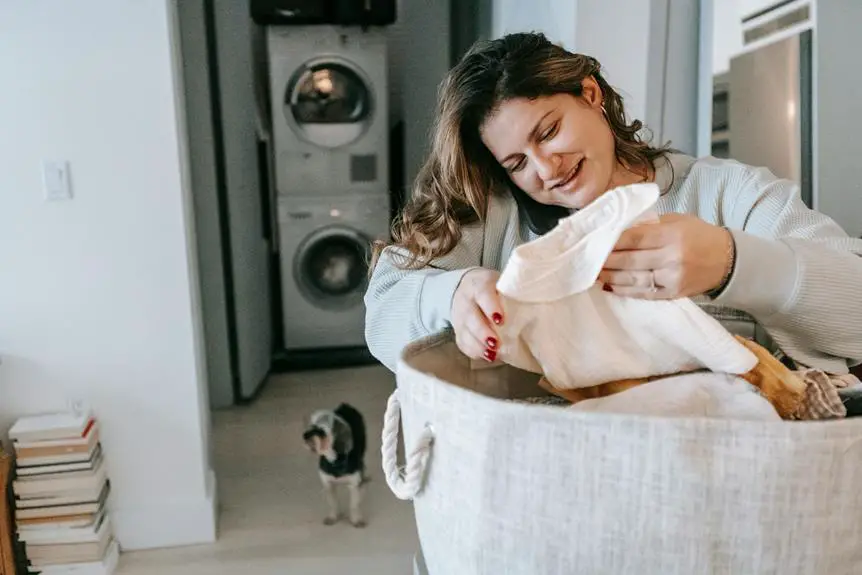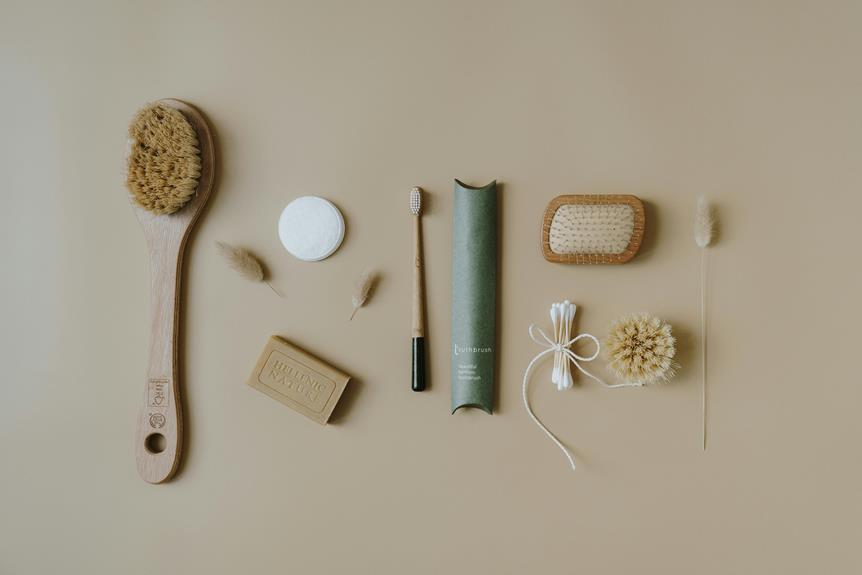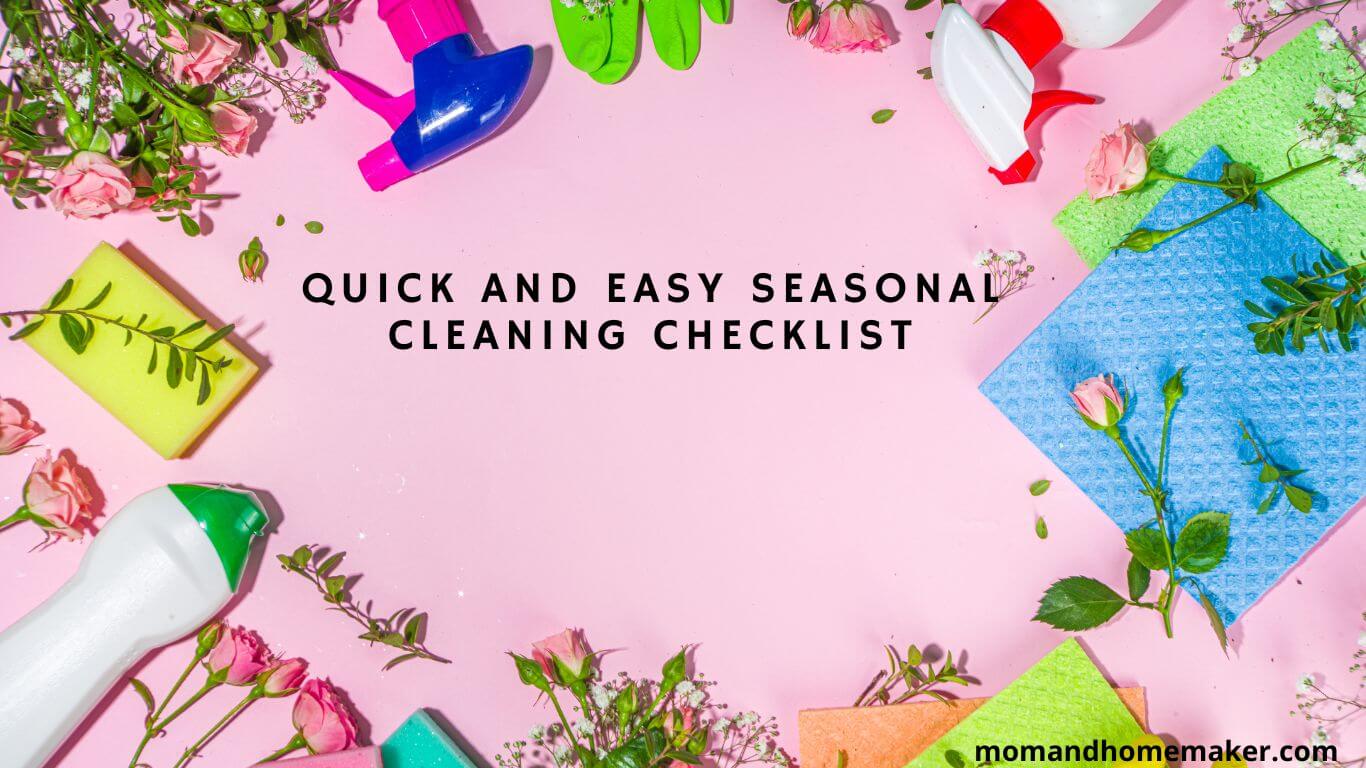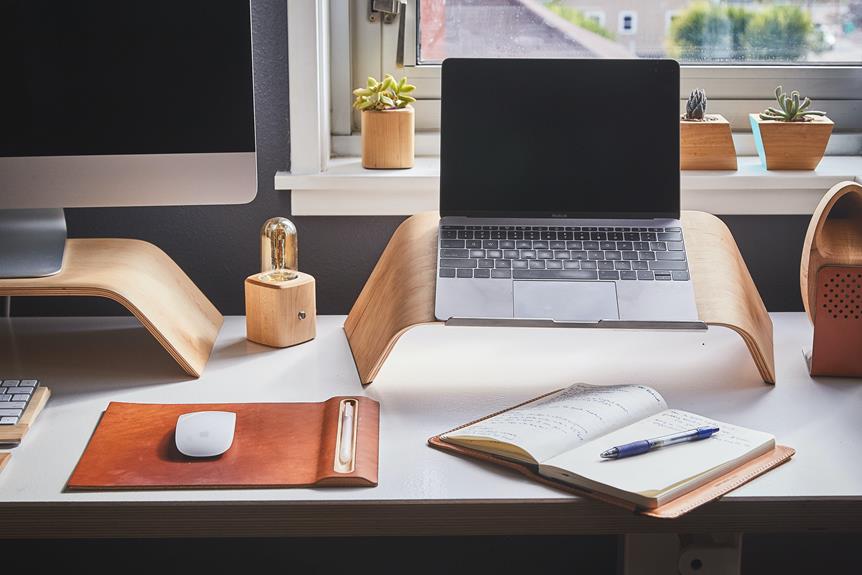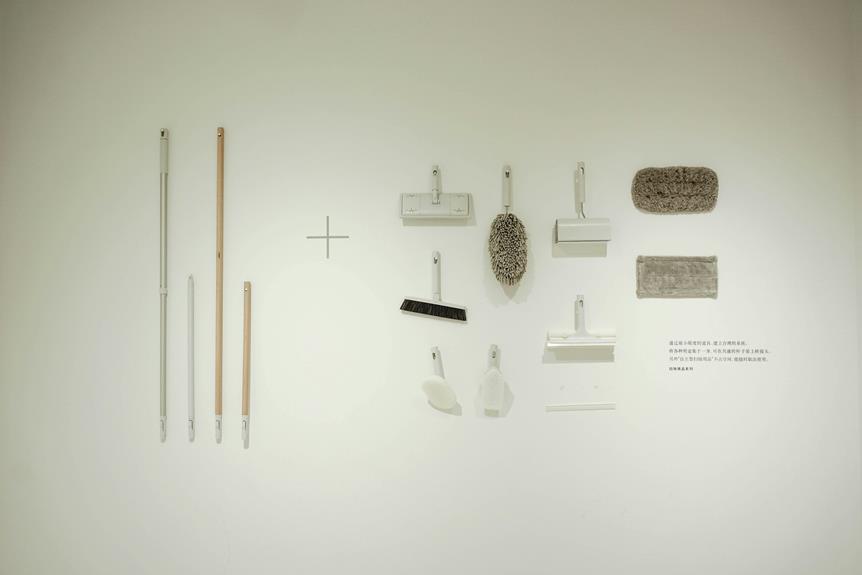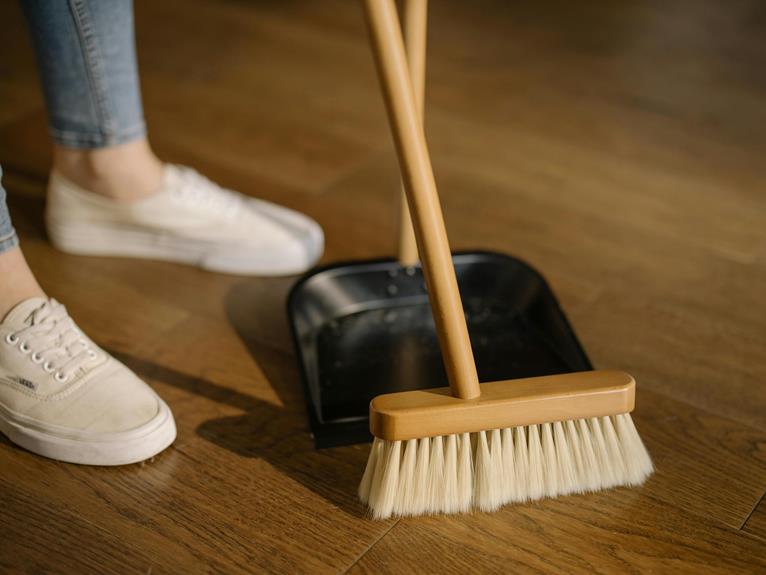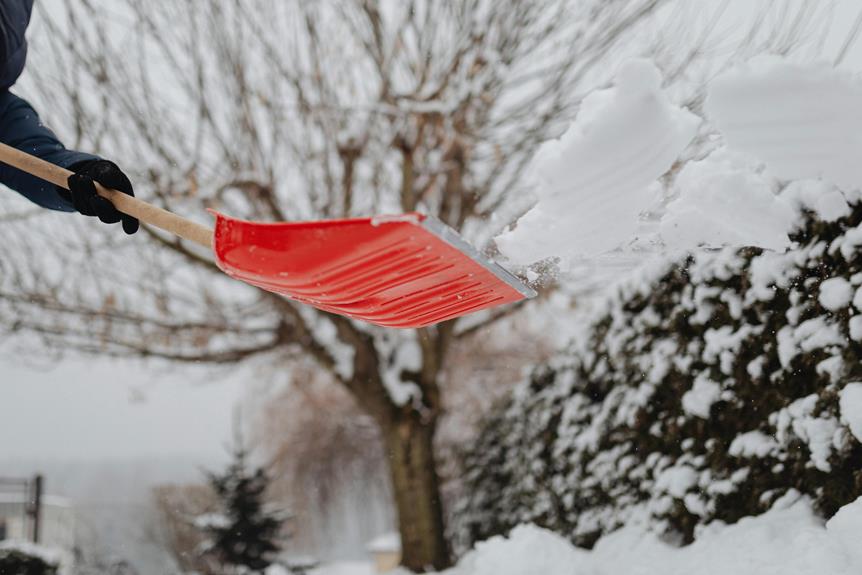As pet owners, maintaining a clean and healthy living environment for our furry companions is essential for their well-being and happiness. Seasonal cleaning presents an opportunity to address specific challenges that arise in a pet-friendly home, such as shedding, odors, and potential allergens.
By implementing targeted seasonal cleaning practices, pet owners can create a comfortable and hygienic space for their pets while also enhancing the overall cleanliness of their homes.
In this article, we will delve into the best practices for seasonal cleaning in a pet-friendly home, offering practical advice and solutions for a harmonious coexistence between pets and their owners.
Prepare Your Cleaning Supplies
To effectively tackle your seasonal cleaning, start by organizing your cleaning supplies. This will make your cleaning routine more efficient and keep your pet-friendly home tidy and fresh. Sort your supplies into categories like surface cleaners, disinfectants, and tools such as brushes and mops. This way, you’ll have everything you need easily accessible, making cleaning a breeze.
When choosing cleaning products, opt for eco-friendly options that are safe for both your pets and the environment. Look for pet-friendly cleaning products that are free from harsh chemicals, as these can be harmful to your furry friends. You can also use natural ingredients like vinegar, baking soda, or lemon juice to create homemade cleaning solutions that are effective and safe for your pets.
Dealing with pet fur can be challenging, especially if your pets shed a lot. To minimize the amount of fur in your home, regularly groom your pet and invest in a good-quality pet hair vacuum. Pay extra attention to areas where your pets spend the most time, such as their favorite sleeping spots or the corners of rooms, when vacuuming.
If you have multiple pets, it’s important to establish a regular cleaning routine to keep your home clean and odor-free. Vacuum and mop the floors regularly, clean their feeding areas, and wash their bedding frequently. You can also use air purifiers or odor-neutralizing sprays to keep your home smelling fresh and welcoming.
Create a Cleaning Schedule
Now that your cleaning supplies are organized and ready, it’s time to establish a cleaning schedule to ensure your home stays clean and pet-friendly.
Creating a cleaning schedule will help you stay on track and maintain a tidy living environment for both you and your furry friend. Here are some steps to guide you in creating an effective cleaning schedule:
- Choose pet-friendly cleaning products: Make sure to select cleaning products that are safe for your pets and won’t harm them if they come into contact with them.
- Establish a cleaning routine: Determine how often you need to clean different areas of your home. For example, you may want to clean the litter box daily, vacuum and mop the floors weekly, and deep clean the carpets and upholstery monthly.
- Divide cleaning tasks: If you live with family members or roommates, divide the cleaning tasks among yourselves. This will make the cleaning process more manageable and ensure that everyone contributes to maintaining a pet-friendly home.
- Set realistic cleaning goals: Be realistic about the time and effort you can dedicate to cleaning. Set achievable goals that you can stick to without feeling overwhelmed. This will help you maintain a consistent cleaning routine and prevent tasks from piling up.
Focus on Pet Hair Removal
Keeping your home clean and free from pet hair is important for maintaining cleanliness and preventing allergies. Pet hair can quickly accumulate and create a messy environment, especially if you have furry friends who shed a lot. To effectively remove pet hair, you need to use various techniques and the right tools.
Preventing pet hair buildup is key. Regularly grooming your pets by brushing them daily will help remove loose hair before it settles on surfaces.
Choosing the right tools for pet hair removal is essential. Look for tools specifically designed for this purpose, such as lint rollers, sticky tape, or rubber gloves. These tools can effectively pick up pet hair from furniture, carpets, and clothing.
When it comes to removing pet hair from clothing, try using a lint roller or a damp sponge. The sticky surface of the lint roller will easily pick up the hair, while the damp sponge can trap and remove it from the fabric.
To minimize pet hair on furniture, consider using furniture covers or blankets that can be easily washed. Regularly vacuum your furniture using a brush attachment to remove any loose hair that might be trapped in the fabric.
Deep Clean Pet Bedding
Maintaining cleanliness and hygiene for your pet’s bedding is easy with regular deep cleaning. Here are some helpful tips to keep your pet’s bedding fresh and clean:
- Cleaning Methods: Use a pet-safe detergent and wash the bedding in hot water to eliminate bacteria or parasites. Consider using a washing machine with a sanitized cycle for thorough cleaning.
- Proper Drying: After washing, ensure the bedding is completely dry to prevent mold and mildew. Use a high heat setting in the dryer or let it air-dry in direct sunlight.
- Natural Remedies: To get rid of odors, add a cup of white vinegar or baking soda to the wash cycle. These natural remedies can help neutralize pet smells without harsh chemicals.
- Removing Stains: For tough stains, treat them with a pet stain remover or a mixture of hydrogen peroxide and dish soap. Let it sit for a few minutes before washing.
- Preventing Allergies: If your pet has allergies, consider using hypoallergenic detergents and bedding materials. Regular cleaning can help reduce allergens and keep your pet comfortable.
Clean and Sanitize Pet Toys
Keeping your pet’s toys clean and sanitized is crucial for their health and the well-being of your family. Like any other object in your home, pet toys can collect dirt, bacteria, and even mold. By taking the time to clean and sanitize them regularly, you can create a safe environment for everyone.
Here are some tips on how to clean and sanitize different types of pet toys:
- Chew Toys: Soak chew toys in a mixture of hot water and pet-safe disinfectant. Rinse thoroughly and let them air dry before giving them back to your pet.
- Stuffed Animals: Place stuffed animals in a pillowcase and wash them in the washing machine on a gentle cycle. Use a pet-safe detergent and avoid fabric softener. Air dry or tumble dry on low heat.
- Rubber Balls: Scrub rubber balls with warm, soapy water. Rinse them thoroughly and allow them to air dry.
- Squeaky Toys: Wipe down squeaky toys with a pet-safe disinfectant wipe, paying attention to all the crevices to remove dirt and grime.
- Interactive Toys: Follow the manufacturer’s instructions for sanitizing interactive toys. Some may be dishwasher safe, while others may require a wipe-down with a pet-safe disinfectant.
Address Pet Stains and Odors
To effectively remove pet stains and odors, you need to use the right cleaning methods and products. As a pet owner, you want to keep your home clean and smelling fresh for both your pet and yourself.
Here are some tips to help you tackle pet stains and eliminate unpleasant odors:
- Pet Stain Removal: Start by blotting the stain with a clean cloth to soak up as much liquid as possible. Then, use a pet stain remover designed for the surface you’re cleaning, such as carpet, upholstery, or hardwood floors.
- Odor Elimination: After treating the stain, it’s important to get rid of any lingering smells. Use an odor-neutralizing spray or enzyme cleaner to break down the molecules that cause the odor and eliminate the smell.
- Carpet Cleaning: Regularly deep clean your carpets to keep them fresh and free from pet-related stains and odors. You can use a carpet cleaner or hire professional carpet cleaning services for a thorough cleaning.
- Upholstery Cleaning: If your pet has left stains or odors on your furniture, use upholstery cleaning products that are safe for both the fabric and your pet. Follow the instructions provided by the manufacturer for the best results.
Vacuum and Mop Floors Regularly
Keeping your floors clean when you have pets is important for maintaining a fresh and pet-friendly home. Regularly vacuuming and mopping your floors will help remove dirt, pet hair, and pet odors.
To effectively clean your floors, start by choosing the right cleaning tools. Look for vacuum cleaners with powerful suction and attachments designed specifically for pet hair. It’s also a good idea to use pet-friendly cleaning products that won’t harm your furry friends. These products are formulated to remove stains and odors without any risk to your pets.
When vacuuming, make sure to pay extra attention to areas where your pets spend the most time, like their favorite lounging spots or their feeding area. This will help prevent lingering pet odors.
After vacuuming, use a pet-friendly cleaner and a microfiber or steam mop to thoroughly clean your floors. Remember to rinse and wring out the mop regularly to avoid spreading dirt around.
Clean Pet Bowls and Feeding Areas
Keeping your pet’s bowls and feeding areas clean is essential for their health and well-being. To maintain a fresh and pet-friendly home, follow these simple tips:
- Clean water bowls daily: Wash your pet’s water bowls every day using hot, soapy water. This will remove dirt, debris, and bacteria, ensuring a clean and safe drinking environment for your pet.
- Prevent bacterial growth: After washing the bowls, make sure to thoroughly dry them before refilling with fresh water. This will help prevent the growth of bacteria and keep your pet healthy.
- Clean the feeding station: Regularly wipe down your pet’s feeding station to remove spills and food particles. Use a pet-safe cleaner to disinfect the area and prevent any potential contamination.
- Store food properly: Keep your pet’s food in airtight containers to maintain its freshness and prevent pests from getting to it. This will also help keep the feeding area clean.
Tackle Pet-Related Messes in the Yard
Keep your yard clean and tidy by addressing pet-related messes effectively. Maintaining your yard is important for creating a safe and inviting space for both you and your furry friend.
One common problem is preventing pets from digging. To tackle this issue, designate a specific area where your pet can dig and provide them with appropriate toys or treats to keep them entertained. Regularly check for any holes in your yard and fill them promptly to discourage further digging.
Another crucial aspect of yard maintenance is removing pet waste. Make sure to scoop up and dispose of pet waste regularly to keep the yard clean and odor-free. Use biodegradable bags for easy disposal and consider installing a pet waste station for added convenience.
Dealing with muddy paws can be challenging, especially during rainy seasons. Keep a towel near the door and wipe your pet’s paws before they enter the house. You can also consider using pet-friendly paw wipes or investing in a paw-cleaning device to make the process easier.
Controlling fleas and ticks is essential for the health and well-being of your pet. Regularly treat your pet with flea and tick prevention products recommended by your veterinarian. Additionally, keep your yard well-maintained by regularly trimming grass, shrubs, and trees, as these can provide hiding places for pests.
Clean and Maintain Litter Boxes or Potty Areas
Maintaining clean and hygienic litter boxes or potty areas for your pets is essential for a fresh and odor-free yard. Here are some tips to help you keep these areas clean:
- Use baking soda to eliminate odors. Sprinkle it on the bottom of the litter box before adding litter. You can also try using unscented baby wipes to quickly clean the surface of the litter box.
- Choose litter that’s easy to clean and doesn’t produce strong odors. Clumping litter is a popular choice as it makes it easier to remove waste without emptying the entire box.
- Consider using litter box deodorizers or additives that neutralize odors. You can place activated charcoal or baking soda in a small container near the litter box to absorb unwanted smells.
- Create your cleaning solution by mixing equal parts of water and white vinegar. This can be used to clean the litter box and remove any lingering odors.
- Ensure that the litter box is easily accessible for your pet and clean it regularly to prevent accidents. Place the litter box in a quiet and private area to encourage your pet to use it.
Address Pet-Related Allergies and Dander
If you or someone in your household has pet allergies, there are ways to manage the issue. Allergy prevention is important for creating a comfortable, allergy-free home.
One effective method is reducing dander, the main cause of pet allergies. Regularly grooming your pet, including brushing and bathing, can help reduce dander. Using pet-friendly cleaning products designed to neutralize odors and remove allergens can also make a difference.
Keeping your home clean by vacuuming carpets, furniture, and curtains is essential for eliminating dander. Investing in a high-quality air purifier can further remove allergens from the air.
Creating pet-free areas, like bedrooms, can provide relief for allergy sufferers. By following these strategies, you can create a pet-friendly home that’s also allergy-free, ensuring everyone feels comfortable and included.
Remove Pet Hair From Furniture and Upholstery
Regularly removing pet hair from furniture and upholstery is crucial for maintaining a clean and pet-friendly home. Here are some cleaning tips and techniques to help you keep your furniture in great shape while creating a cozy space for both you and your furry friend:
- Get a pet-friendly vacuum cleaner: Look for a vacuum cleaner specifically designed to tackle pet hair. These models have powerful suction and specialized attachments to effectively remove pet hair from furniture and upholstery.
- Use a lint roller or pet hair remover tool: A lint roller or pet hair remover tool can easily and quickly eliminate pet hair from fabric surfaces. Just roll the sticky surface over the furniture, and the hair will stick to it.
- Regularly brush your pet: Regularly grooming your pet can significantly reduce the amount of hair they shed. By brushing them outside, you can help prevent loose hairs from ending up on your furniture.
- Protect your furniture with covers or blankets: Consider using furniture covers or blankets to shield your upholstery from pet hair. These can be easily removed and washed, keeping your furniture clean and fresh.
Clean and Deodorize Pet Carriers or Crates
Keep your pet carriers or crates clean and odor-free with these simple cleaning tips. Regularly maintaining your pet carriers or crates is important for hygiene and your pet’s comfort during transportation. Here are some tips to help you keep your pet carriers or crates in top condition:
- Remove any bedding or accessories: Take out all bedding, toys, and other accessories from the carrier or crate.
- Vacuum or shake out loose debris: Use a vacuum cleaner or simply shake out any loose debris from the carrier or crate.
- Scrub with a pet-safe cleaner: Wipe down the carrier or crate with a pet-safe cleaner, making sure to reach all the nooks and crannies.
- Rinse thoroughly: Rinse the carrier or crate with water to remove any remaining cleaning solution.
- Air dry in a well-ventilated area: Allow the carrier or crate to air dry completely in a well-ventilated area before using it again.
Wash and Freshen up Pet Collars and Leashes
Keep your pet’s collars and leashes clean and fresh with these simple tips. It’s important to regularly clean collars and sanitize leashes to remove stains, reduce odors, and prevent allergies. Here’s how you can keep your pet’s accessories in great condition:
- Wash with mild soap: Use gentle soap and warm water to clean your pet’s collars and leashes. This will help remove dirt and grime without causing any damage.
- Remove stubborn stains: If your pet’s collar or leash has tough stains, gently scrub them away with a soft brush or toothbrush. Be careful not to damage the material.
- Air dry in the sunlight: After washing, allow the collars and leashes to air dry in the sun. The sun’s rays will help kill bacteria and give them a fresh scent.
- Use a pet-friendly freshener spray: To further minimize odors, consider using a freshener spray that’s safe for your furry friend. Look for options that will keep their accessories smelling pleasant.
Don’t Forget About Cleaning Air Vents and Filters
Make sure to clean your air vents and filters regularly to maintain proper airflow and improve the air quality in your home. This is especially important for the health of both you and your pets. Over time, pet hair, dander, and dust can build up in the air ducts, restricting the airflow and impacting the overall air quality.
By regularly cleaning the ducts, you can remove these contaminants and prevent them from circulating throughout your home. This not only improves the air quality but also helps reduce pet odors and prevent pet allergies.
To clean the air vents, start by removing the vent covers and vacuuming up any dirt and debris. Use a damp cloth to wipe down the grates and ensure they’re clean and free from any obstructions.
It’s crucial to regularly replace or clean your air filters. These filters trap pet hair, dander, and other airborne particles, preventing them from entering your HVAC system. By keeping your filters clean, you can ensure proper airflow and improve the overall efficiency of your HVAC system.
Taking the time to clean your air vents and filters won’t only benefit your pet’s health but also create a clean and fresh environment for everyone in your home.
Check out more of our articles on our blog page.
Conclusion
Keeping our pet-friendly homes clean and fresh as the seasons change is vital.
By deep cleaning, freshening up our pet’s living spaces, and tackling pet hair and dander, we can maintain a healthy environment for our furry friends.
A clean home isn’t only important for our pets but also for their owners.

